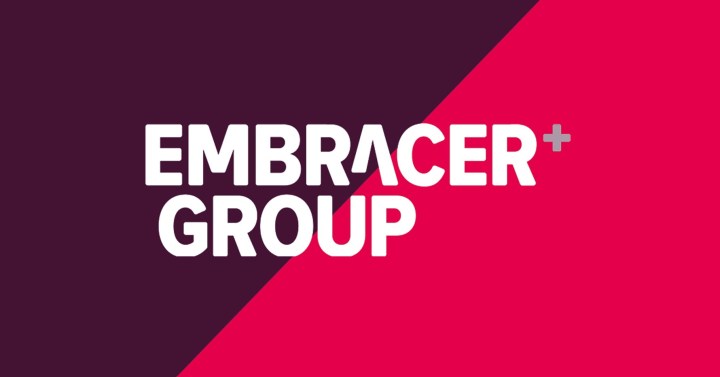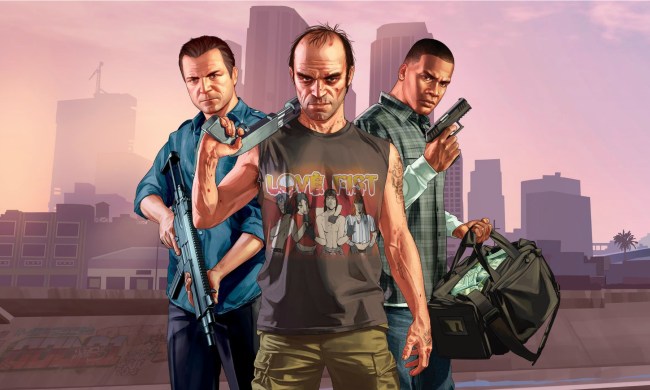You might not have heard of Embracer Group, but you’ve probably played something a studio it owns developed. Have you played Tiny Tina’s Wonderlands, Valheim, Elex II, or Shadow Warrior 3 recently? Then you’ve been enjoying a game from Embracer.
While Embracer’s name might not be on the box or store page, this European holding company has subtly become one of the biggest companies in the gaming space. If there’s a AA game launching, this studio likely has a hand in it. The company made a big move earlier this year when it acquired major franchises like Tomb Raider after buying Crystal Dynamics, Eidos Montreal, and Square Enix Montreal. Now, it’s continuing to assert its dominance with the acquisition of physical game manufacturer Limited Run Games and the rights to The Lord of the Rings IP.
These acquisitions speak to the continued growth of Embracer Group, which looks like it will become a bigger player in the AAA gaming space in the years to come. While Embracer Group has fallen under the radar for many people over the past decade, it’s worth paying attention to in the years to come.
Starting the embrace
“Embracer Group is a parent company of businesses led by entrepreneurs in PC, console, mobile and board games, and other related media,” the company boasts on its website. “The group has an extensive catalog of over 850 owned or controlled franchises.”

Embracer Group is a holding company that continuously buys a lot of new studios and IP, making it the somewhat obscure parent company of several notable publishers and developers. It doesn’t help that Embracer Group has actually gone by many names over the years.
Originally known as Nordic Games, the company has steadily acquired various IPs and studios since 2011. A significant shift happened in 2016 when the company rebranded to THQ Nordic AB after acquiring the trademark for, and many assets of, the defunct classic publisher at auction.
“Embracer is the best-kept secret in gaming.”
This might be the most recognizable period of its history, though the company also confusingly had a subsidiary called THQ Nordic GmbH that published games like Battle Chasers: Nightwar and Darksiders 3. The THQ Nordic name got sullied when the THQ Nordic GmbH held an AMA on the controversial platform 8Chan in early 2019.
While THQ Nordic GmbH apologized for this event, its parent company decided to end the confusion later that year and changed its name to Embracer Group. This move kept THQ Nordic as a publishing subsidiary as Embracer Group acquired new developers and publishers like Saber Interactive and Gearbox Entertainment.

Embracer Group owns too many companies and franchises to list here, but know that as of 2022, Embracer Group still exists and continues to acquire new studios and IP through 11 operating groups that it owns. Here’s a look at what the group currently owns.
- THQ Nordic
- Plaion
- Saber Interactive
- Gearbox Entertainment
- DECA Games
- Coffee Stain
- Amplifier Game Invest
- Easybrain
- Asmodee
- Dark Horse Media
- Freemode
Each operating group focuses on something slightly different. For example, Embracer Group says Freemode, which was formed alongside the Lord of the Rings IP acquisition, will focus on retro or historic franchises, bringing them into the modern era. Companies like Saber, THQ Nordic, and Gearbox also have the autonomy to make their own acquisitions, further fueling growth for Embracer Group. While this approach means that not many gamers will know the name “Embracer Group,” it’s very likely that they at least know of a game or franchise that falls under this publicly traded company’s gigantic umbrella.
Crystalizing the embrace
On May 2, Embracer Group announced it would buy Crystal Dynamics, Eidos Montreal, and Square Enix Montreal from Square Enix for $300 million. Then, on August 18, Freemode was formed, companies like Tripwire Interactive and Limited Run Games were purchased, and Embracer Group obtained the rights to make Lord of the Ring movies, video games, board games, merchandise, theme parks, and stage productions. This has all brought more attention Embracer’s existence than ever in 2022. “Embracer is the best-kept secret in gaming: A massive, decentralized collection of entrepreneurs whom we are thrilled to become a part of today,” Square Enix America and Europe CEO Phil Rogers said when Embracer Group acquired the former Square Enix studios.
Meanwhile, The Saul Zaentz Company COO Marty Glick said that “we could not be more thrilled that it is Embracer now taking up the responsibility and we are confident their group will take it to new heights and dimensions while maintaining homage to the spirit of these great literary works,” after selling it the rights to Middle-earth Enterprises. While those are highly positive interpretations of Embracer Group’s strategy, it speaks to how big Embracer is despite its relative obscurity.
Embracer’s Square Enix acquisitions signify its intent to make more big-budget AAA video games. While THQ Nordic and Deep Silver are not unknown companies, they have more of a reputation for producing mid-budget or “AA” video games. As Embracer Group continues to grow, it clearly wants to change that.

Several AAA titles like the new Saints Row and the remake of Star Wars: Knights of the Old Republic are in development at studios Embracer owns. Notably, Embracer emphasized the AAA capabilities of Square Enix studios’ upon the acquisition.
“Embracer has been particularly impressed by the studios’ rich portfolio of original IP, housing brands with proven global potential such as Tomb Raider and Deus Ex, as well as demonstrating the ability to create AAA games with large and growing fan bases,” Embracer Group said in the acquisition press release. “There are compelling opportunities to organically grow the studios to maximize their commercial opportunities.”
Those acquisitions bring more AAA-level studios that employ over 1,100 developers under its belt. Meanwhile, owning Middle-earth Enterprises gives Embracer the ability to do as they please with one of the most popular fantasy series ever. Franchises like The Lord of the Rings, Tomb Raider, and Deus Ex produce multimillion seller games and even have potential outside the gaming industry, so Embracer isn’t making its AAA franchises from scratch.
A future embrace
“I’m looking a decade ahead,” Embracer Group CEO Lars Wingefors said in a presentation about the Square Enix acquisitions. “I want to create some amazing new big games with high quality or very high ambitions together with the teams. And what I’ve seen, I’m thrilled about.”
While there is the occasional surprise hit like Valheim, Embracer Group has yet to really have a AAA success on the level of Ubisoft’s Assassin’s Creed or EA’s Battlefield series. Acquiring these Square Enix studios and Middle-Earth Enterprises are big steps in making that happen.

Embracer Group’s strategy for success seems to be to continuously acquire studios so it can release as many successful games as possible. The more that are on a AAA level, the better. According to the presentation about these acquisitions, Embracer Group has over 230 games in the pipeline across every studio it owns. Thirty of those are AAA titles, and it’s safe to assume that number will continue to grow.
Couple that with its acquisition of non-video game companies like Asmodee and Dark Horse and their ownership of The Lord of Rings outside of gaming, and Embracer Group will only become more prominent and more relevant in and outside of video games for years to come.
While Embracer mainly has been acquiring studios and IP in the minor leagues for years, it’s a company that you can no longer ignore when it comes to video game acquisitions. Because acquisitions in the video game industry are so hot right now, this has proven to be a lucrative strategy for Embracer Group. Take a look at everything it owns; you just might be surprised. In a few years, one of the biggest AAA games, comics, and movies of the year might have some connection to Embracer Group.



